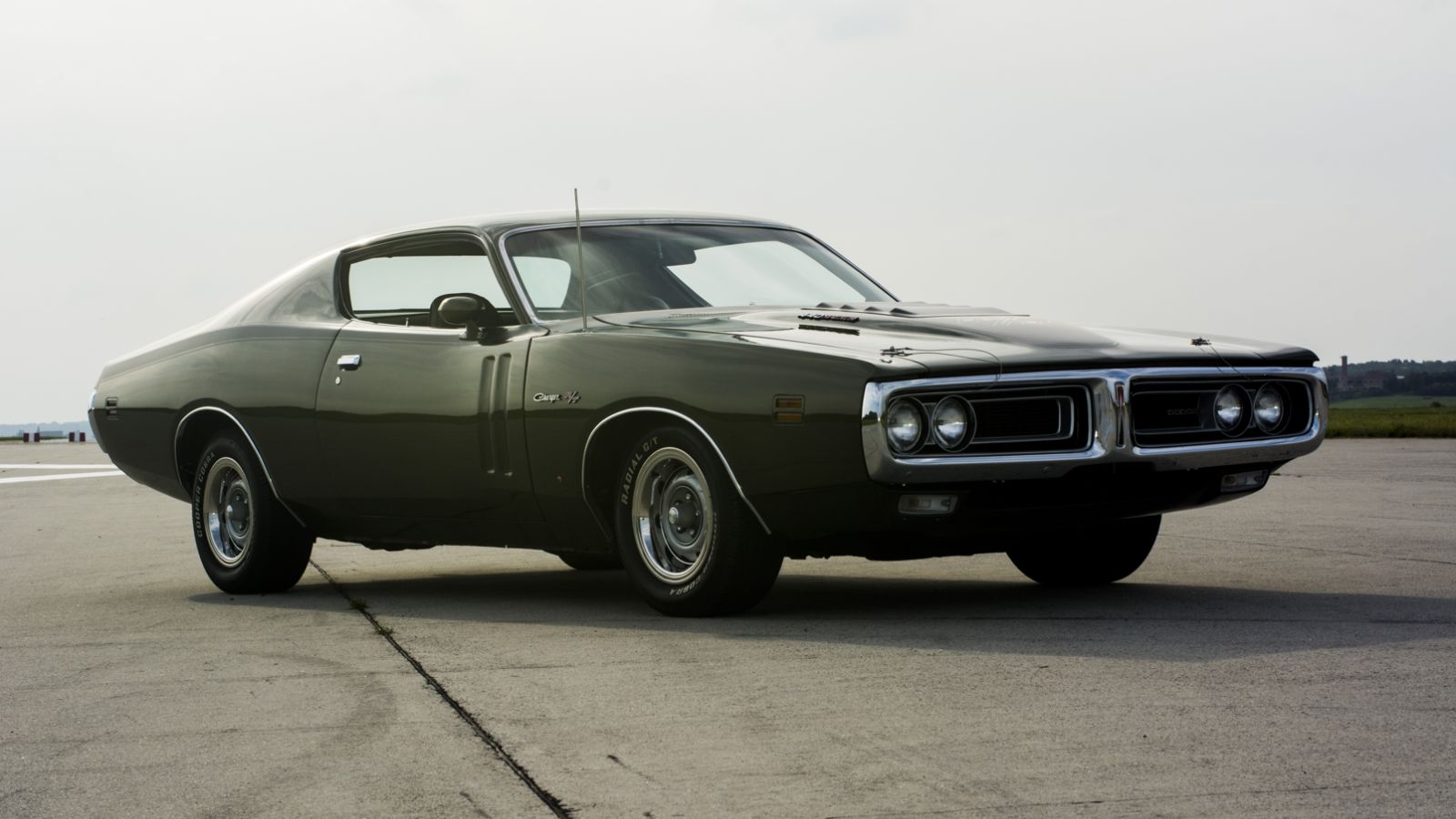Millennials looking for a vintage car to add to their collection or to drive regularly prize reliability and practicality. Gas guzzlers, bulky or overly compact cars, and underpowered muscle cars of a bygone era hold little appeal to many millennials. Here are 18 vintage vehicles that millennials are avoiding.
Gas Guzzlers

Many cars produced today lack a gas engine and feature hybrid or electric engines. Millennials are concerned about their car’s carbon footprint. They are keen to avoid buying vintage vehicles that are fuel inefficient, like the 1970 Dodge Challenger, which Hot Cars noted as “one of the biggest gas guzzlers of all time.”
Bulky American Land Yachts

Land yacht cars, generally of American origin and produced between 1960 and 1976, are infamous for their impracticality. Vehicles like the 1960 Lincoln Continental and the 1974 Imperial LeBaron have high maintenance and fuel costs due to their large engines and are challenging to drive around in urban environments.
Underpowered Muscle Cars of the Late ’70s

Muscle cars today are known for their V8 engines, which provide high horsepower and affordability. But the 1973 oil crisis saw fuel rationing and higher prices for muscle cars, and the Clean Air Act lowered octane ratings to 91. Muscle cars produced after had a reduced compression ratio of engines, which yielded poorer performance. Hot Cars notes that the 1978–79 Dodge Magnum was one of several from the era “burdened by [a] boring driving experience and slow engine.”
Complex British Sports Cars

During the 1970s, new standards and regulations made British sports cars more complex than earlier models. As the British Sports Car Hall of Fame noted, “Difficulties in meeting new pollution standards had made the cars slower than ever before, while safety requirements added increased weight and complexity to make the cars less agile and more complex to maintain and repair.” Models like the MG MGB and the Triumph TR6 are infamous for requiring extensive upkeep, with high costs and difficulty sourcing parts discouraging millennial ownership.
Oversized Station Wagons

Once seen as quintessential family vehicles, full-size station wagons are now cumbersome and outdated, with models like the Ford Country Squire impractical for today’s urban parking norms. The rise of SUVs and crossovers has rendered classic station wagons largely obsolete.
1980s Plastic Cars

According to Plastics Mag, “polymers, and, in particular, thermosetting and subsequently, thermoplastic resins, would be used widely for external applications in the 1980s.” Models like the Pontiac Fiero and Chevrolet Corvette (C4) relied heavily on plastic for both their interior and exterior components. Some millennials believe that the aesthetic and quality of these vehicles have not held up over time.
Fading ‘80s American Convertibles

Convertibles from the ‘80s, including the Chrysler LeBaron and Ford Mustang Convertible, have faded in popularity due to concerns over their safety and practicality. Notorious for issues like stalling and blown engines, millennials avoid the convertibles of this era that models from the late 1990s overshadowed.
1970s Economy Cars

Early attempts at fuel efficiency in the 1970s led to lackluster performance and design. Cars like the AMC Gremlin and the Ford Pinto lack modern safety features. According to the American Museum of Tort Law, the Pinto “became infamous in the 1970s for bursting into flames if its gas tank was ruptured in a collision.” These safety flaws have not aged well in the eyes of many millennials.
Disappointing Diesel Cars

In the late 1970s, General Motors introduced its Oldsmobile diesel engine. The V8 model was plagued with reliability issues, and many of these cars eventually had their engines replaced with conventional gasoline models. These diesel cars are undesirable in the collectors’ market, and their anemic performance and unreliability tarnished the reputation of diesel cars in the U.S. for decades until they were further damaged by Dieselgate in 2015.
Aging European Models

Some European cars from the 1970s and 1980s used materials that haven’t aged well for their frames. Popular models like the Mercedes-Benz W123 suffer from rusting front fenders and jack points, as well as complex vacuum systems prone to numerous issues. The cost and effort to repair some of these models often exceed their value to millennials.
Malaise Era Downturns

Automotive journalist Murilee Martin invented the term “malaise era” for automobiles and argued the period in the U.S. automotive industry “began in 1973 and ended after 1983.” As the industry adapted to new demands for increased fuel efficiency, safety, and emissions standards, carmakers struggled to adapt, producing infamously unstylish vehicles like the 1977 Mercedes-Benz 450SLC.
Complicated Italian Models

Italian sports cars from the 1970s and 1980s are highly sought after by collectors, but millennials are avoiding them for their high maintenance costs and reliability issues that deter practical use. Models like the Ferrari 308 and Lamborghini Countach require expertise for maintenance, which is scarce and expensive.
Forgotten Economy Hatchbacks

Economy hatchback models from the 1970s and 1980s, including the Chevrolet Chevette and Ford Escort, were basic transportation options at the time and hold little appeal to millennials today. Their lack of modern safety features and convenience, paired with their underwhelming performance and design, fails to meet current aesthetic or performance standards. Consumer Guide notably argued that the Chevette was “unimaginative to the extreme.”
Japanese Kei Cars of the 1980s

Japanese Kei cars from the 1980s had a speed limit of about 50 mph, with a warning chime that alerted the driver if this speed was exceeded. Their underpowered engines and highly compact dimensions were well suited for Japan’s urban environment, but quirky models like the Subaru 360 and Honda N600 lack practicality for American roads.
Obscure Eastern Bloc Vehicles

Vehicles like the East German Trabant and the Serbian Yugo are known for poor build quality and performance. Their historical and cultural significance is of more interest to car enthusiasts than their driving experience, with millennials avoiding buying them for their lackluster performance.
Early Electronic Systems

The introduction of new electronic features and fuel injection systems in the 1980s produced unreliable cars. The Cadillac Seville, with its HT4100 engine, was notorious for its numerous issues. Auto Evolution reports that the engine “suffered from head gasket problems, coolant leaking issues, and oil pump failures. Replacement parts were expensive, and most repair shops wouldn’t work on them.” Millennials looking for vintage cars are skipping on this antiquated technology that isn’t reliable or user-friendly by today’s standards.
Retro Luxury Sedans

Cars like the Lincoln Town Car and Cadillac Fleetwood were once known as luxury models, but they fail to resonate with millennials today. Their large size and gas-guzzler status are impractical for modern urban living, and their dated interior design and technology are far from meeting current luxury standards.
1990s American Compact Cars

Models like the Dodge Neon and Chevrolet Cavalier are often seen as uninspired and lacking in durability by millennials. Modern compact car design and technology have left these models behind, with millennials often ignoring their prevalence in the used car market.
Read More: 20 Things We Did When We Were Young That We Regret Now

It’s easy to say hindsight is 20/20, but what advice would you really give your younger self? Here are 20 things that most people did when they were young that they regret today.
20 Things We Did When We Were Young That We Regret Now
17 Things That Used to Be Highly Respected But Isn’t Anymore

Many things in the world used to be well-respected before turning into complete jokes for various reasons. An internet survey recently asked people, “What is something that was once highly respected but is now a complete joke?” Here are the top 20 answers:
17 Things That Used to Be Highly Respected But Isn’t Anymore
17 Fairy Tales That Are Now Considered Racist

While fairy tales weave magical narratives that span generations, many emerge from historical and cultural contexts tinged with biases. Hiding in many of these tales, racial undertones can be found. Let’s look at 17 fairy tales that have deeper implications.
17 Fairy Tales That Are Now Considered Racist
17 Things Society Can No Longer Do Because Gen Z Said So

Gen Z, our digital-native, trendsetting generation, is making waves in the cultural sea, steering the ship of societal norms in fresh and unexpected directions. As they charter new territories, there are certain practices they’d rather we say goodbye to. Curious? Let’s take a look at 17 things the rest of us can no longer do because Gen Z said so.
17 Things Society Can No Longer Do Because Gen Z Said So
18 Common Traits Found in Adults Who Had Unhappy Childhoods

Being a parent is a hard job, so even those who are truly trying their best will often miss the mark on creating the best environment for their children. Unfortunately, this means that many of us grow up with far-from-perfect childhoods that affect us into adulthood. Here are 18 common traits found in adults who had unhappy childhoods.
